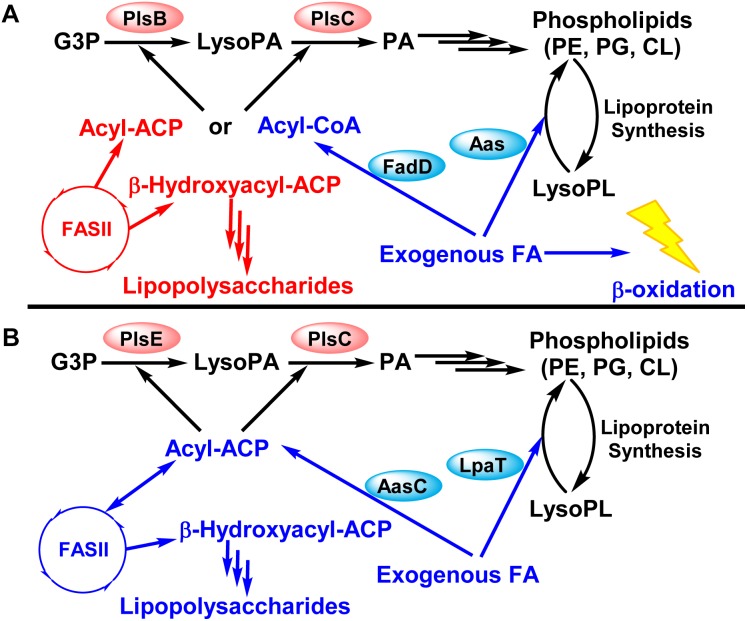FIGURE 1.
Schematic comparison of phospholipid synthesis in Escherichia coli (free living bacteria) and Chlamydia trachomatis (obligate intracellular bacteria). Modified from Yao and Rock (2017b). (A) Phospholipid synthesis pathway in E. coli. (B) Phospholipid synthesis in C. trachomatis. C. trachomatis encodes all the genes necessary for type II fatty acid (FASII) and phospholipid synthesis from acetate, glycerol-3-phosphate, serine, and isoleucine typically found in free-living bacteria. Fatty acids are made in the type II fatty acid synthesis system (FASII). Two acyltransferases (PlsE and PlsC in C. trachomatis vs. PlsB and PlsC in E. coli) make phosphatidic acid (PA). Phosphatidic acid is the precursor to the various phospholipid species, and C. trachomatis encode for the genes to synthesize phosphatidylethanolamine (PE), phosphatidylglycerol (PG), and cardiolipin (CL) like E. coli. Exogenous fatty acids are converted into acyl-CoA in E. coli. Acyl-CoA cannot be elongated by FASII, and can only be used by the acyltransferases or broken down by β-oxidation. In contrast, exogenous fatty acids are converted into acyl-ACP in C. trachomatis, which can be elongated by the FASII or used by the acyltransferases. C. trachomatis is not predicted to encode for β-oxidation genes.

